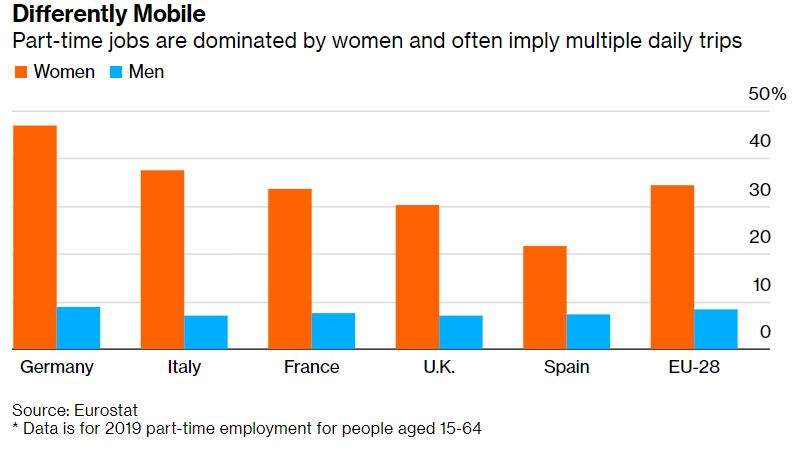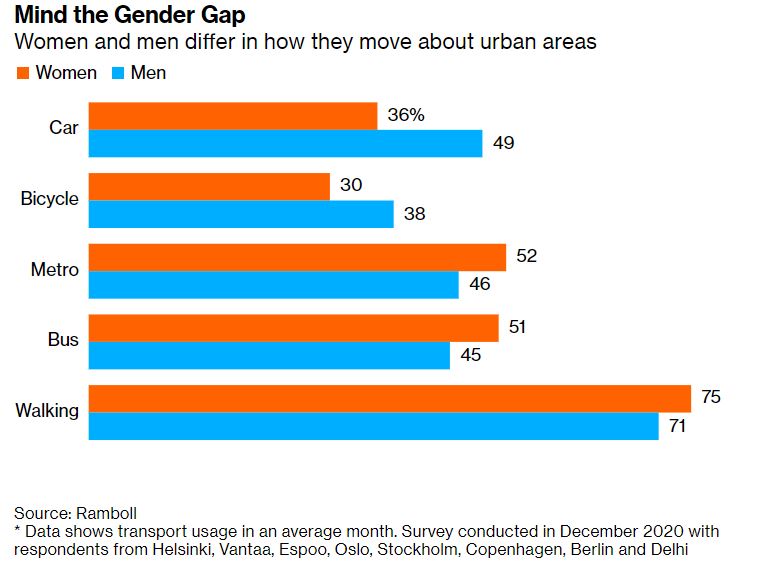
European cities are constantly making mobility greener, but there’s one issue they still haven’t tackled: making it gender-neutral.
Yup, gender can be a big factor in mobility. It’s been shown that women and men have very different travel needs and patterns, but this hasn’t really been considered in mobility plans of city governments — until now.
Cities in Europe now increasingly consider the gendered effects of transport policies and use them to inform adoption of less car-centric systems, Bloomberg reports.
Studies show that while men mostly do a single back-and-forth trip to work by car, women are more likely to make multiple trips per day. This is partly explained by women being forced to combine various activities with work, such as childcare and household chores — which often requires more traveling.

But the fact that women are more likely to take ‘more trips’ during the day doesn’t explain on its own why less car-centric policies are a more balanced approach in terms of gender. Not only do women move more frequently, they also do it mostly by public transport or walking, as you can see from the graph below.

This underlines two major needs for female commuters: the reduction of urban congestion that threatens the safety of pedestrians, and the accessibility to mass transit alternatives.
What are cities doing exactly?
To address these issues, Paris introduced last year its plan to become a “15-minute city.” The idea is that residents access all essential services within 15 minutes of their home by foot, bike, or public transport — which in turn will improve gender equality.
In a similar vein, Barcelona has launched its “superblocks” scheme to direct traffic to the outskirts of each city block, and Austria is implementing the “1-2-3 Climate Ticket” this year which gives access to its public transport nationwide for a flat a $3.6 per day, paid annually.
There are also stirrings in Germany, as center-left parties in Munich have pushed for city-planning based on gender equality.
It goes without saying that these initiatives represent only minor steps towards a gender-equal mobility model. But reducing urban traffic and enhancing safety and accessibility are definitely a step in the right direction which will benefit everyone.
Do EVs excite your electrons? Do ebikes get your wheels spinning? Do self-driving cars get you all charged up?
Then you need the weekly SHIFT newsletter in your life. Click here to sign up.
Get the TNW newsletter
Get the most important tech news in your inbox each week.





